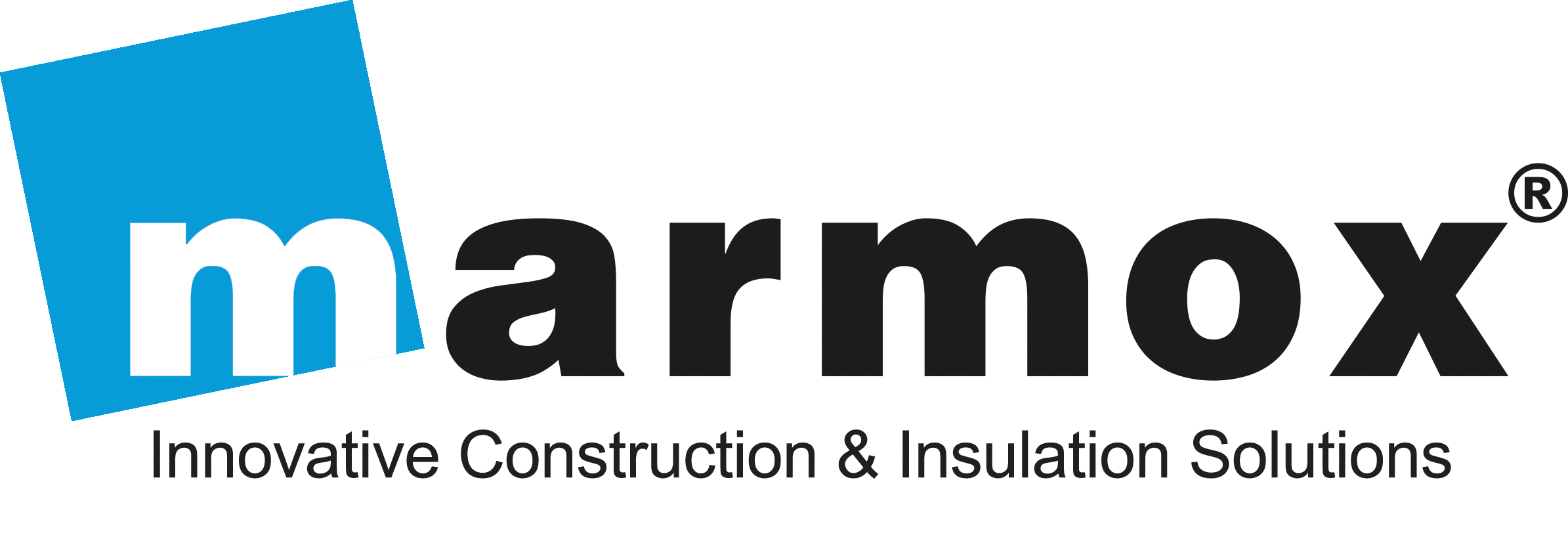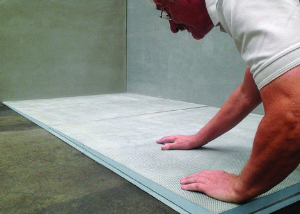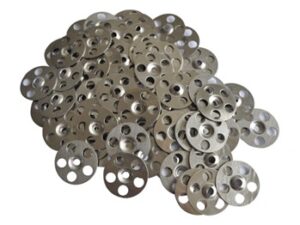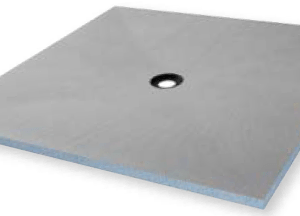Marmox Boards are made from CFC and XPS extruded polystyrene foam bonded with layers of fibreglass reinforced polymer cement. The surface of reinforced polymer concrete is perfect for tile adhesion, waterproofing or plastering. Marmox Boards are difficult to bend, bow or distort compared to plasterboard. Marmox Boards are perfect for use in all wet areas as both floor sheeting and wall sheeting as they will not absorb water and provide great thermal insulation. The characteristic strength and lightweight properties makes Marmox Boards very favourable for use in the construction of bathrooms, kitchens & balconies. The lightweight characteristics of Marmox Boards reduces the requirement for heavy lifting whilst speeding up the construction process.


HIGHLIGHTS
- High compressive strength (withstand 30 t/m2)
- Rigid
- Waterproofed material
- Excellent heat insulation
- Sound insulation (20 decibels)
- High U-value (2.7 W/m2k for 10mm)
- Extruded polystyrene closed cell structure retains R-value even in moist conditions
- Easy to cut with a knife or saw.
- Light weight can be carried by one person ,10mm board is 3kg/m2
- Marmox is environmentally friendly, CFC and HCFC free
SIZES
|
1250 * 600 |
2500 * 600 |
2500 * 1200 |
| 6m |
✓ |
|
|
| 10m |
✓ |
✓ |
✓ |
| 20m |
✓ |
✓ |
✓ |
| 30m |
|
✓ |
✓ |
| 40m |
|
✓ |
|
| 50m |
|
✓ |
|
Frequently Asked Questions – Marmox Boards As Alternative To Engineered Stone
In response to the recent ban on engineered stone in Australia due to health concerns, many professional builders, architects, plumbers, distributors, and DIY homeowners seek safer alternatives for their construction and renovation projects.
Marmox boards emerge as an excellent option, offering durability, versatility, and safety. This FAQ section addresses common enquiries about Marmox boards, providing insight into the benefits and how they compare to engineered stone, ensuring property owners and builders make informed decisions for their projects.
- How are Marmox Boards a solution to engineered stone?
When Marmox is used as a substrate with porcelain, the result is a formidable union of durability and sophistication. This combination not only enhances the structural integrity of surfaces but also creates a visually appealing alternative to engineered stones. Marmox, acting as a robust substrate, fortifies the overall endurance of the product. The marriage of these materials ensures a resilient and aesthetically pleasing solution, offering a compelling choice for those seeking durability and sophistication in their surfaces.
- Is it true that Australia is set to ban engineered stone?
Yes, the Australian government has announced a ban on engineered stone due to the health risks associated with silicosis from silica dust inhalation. This ban is set to take effect on 01 July 2024, targeting the manufacturing, supply, and installation of engineered stone products.For detailed information on the ban and its implications, consider visiting this resource from SafeWorkAustralia.
- What is engineered stone?
Engineered stone is a composite material. It is made from crushed stone bound together by an adhesive, typically used for countertops and other surfaces. Whilst known for its durability and aesthetic appeal, it has raised health concerns due to silica dust.
- Why has Australia banned engineered stone?
Australia has banned engineered stone due to the health risks associated with silicosis, a lung disease caused by inhaling silica dust released when cutting engineered stone.
- When will the ban on engineered stone take effect?
The ban on engineered stone will commence on 01 July 2024.
- Does the ban cover all uses of engineered stone?
The ban targets the manufacturing, importation, supply, processing, and installation of engineered stone but does not include its removal, repair, disposal, or minor modifications.
- What can homeowners and builders do regarding engineered stone?
Homeowners with engineered stone benchtops or tiles can keep them as is without concern. They do not present a safety hazard in your home or workplace when they are not disturbed post-installation.That said, the management of legacy engineered stone products, including removal, modification, repair, and disposal, will be organised by jurisdictions according to a national guideline to be set by Safe Work Australia. This guideline is expected to be presented to Ministers by the end of February 2024, ensuring a standardised approach across Australia.
It’s crucial to stay informed about these requirements to ensure compliance.
- Are there alternatives to engineered stone?
Yes. One effective alternative material would be Marmox Boards or Sheets. Marmox construction boards offer durability and aesthetic appeal similar to engineered stone. Other alternatives include concrete, porcelain, laminates, timber, and natural stone.Marmox construction materials are durable, versatile, and safe for various applications, providing an excellent alternative without the risk of silicosis.
- Are Marmox Sheets or Boards different from engineered stone?
Yes, Marmox Boards are significantly different from engineered stone. They are made from materials that do not pose health risks like silicosis. Marmox Boards are primarily used for waterproofing, insulation, and as an underlayment for floors and walls, offering versatility and safety not associated with engineered stone products.
- Are Marmox construction boards customisable for different design needs?
Absolutely. Marmox construction boards can be easily cut and shaped to fit various design specifications, offering great flexibility for residential and commercial projects.
- What makes Marmox Boards environmentally friendly?
Marmox construction boards are environmentally friendly and CFC- and HCFC-free. They are made from sustainable materials, significantly reducing environmental impact compared to engineered stone, which involves energy-intensive processes.
- Can Marmox construction boards be used in wet areas?
Yes, Marmox construction boards are water-resistant, making them ideal for use in wet areas like bathrooms and kitchens.
- How do Marmox construction boards compare in cost to engineered stone?
Generally, Marmox Sheets or Boards are cost-effective, offering a budget-friendly alternative with comparable durability and aesthetic qualities.
- What are the installation benefits of using Marmox construction boards?
Marmox Boards are lightweight and easy to handle, significantly reducing installation time and labour costs compared to heavier materials like engineered stone.
- Where can I find Marmox construction boards?
For more information on purchasing and using Marmox construction boards as an alternative to engineered stone, please call us today.You may also contact us to explore more detailed guidelines on installation and the benefits of choosing Marmox construction boards.







